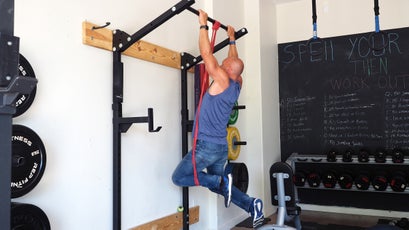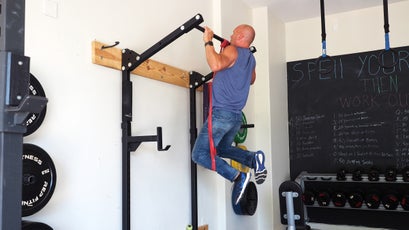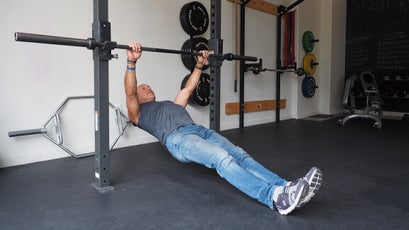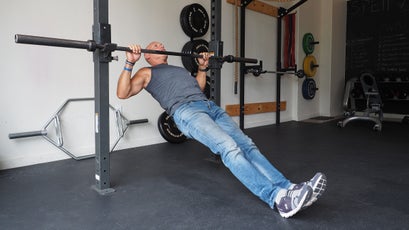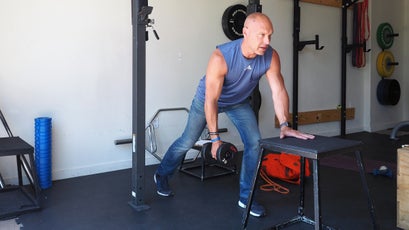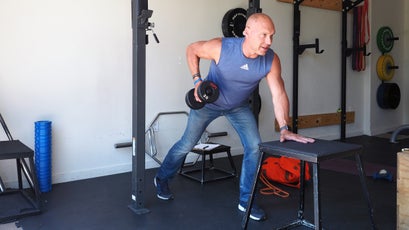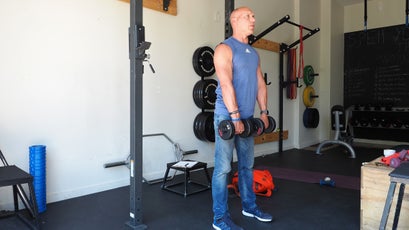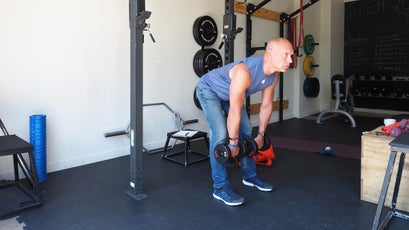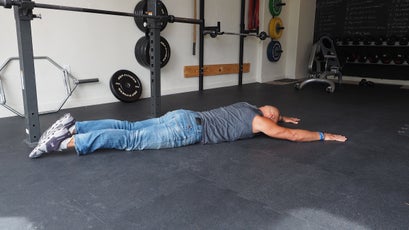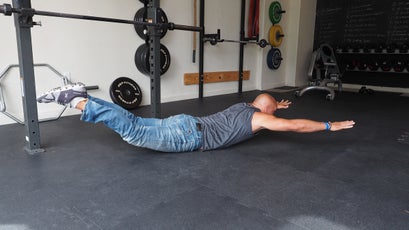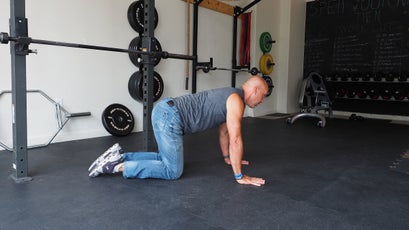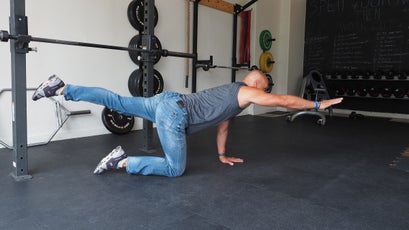Whatever your sport of choice may be, a powerful back will help your performance. Back strength is especially important for activities like swimming and climbing, which involve pulling motions.┬áPlus, the muscle┬ágroups along your spine┬áwork to make more room for your lungs by elevating and expanding the rib cage. Even when youÔÇÖre deskbound, better posture┬áhelps you avoid lower-back, neck, and shoulder pain.
We asked Doug Lawder, a personal trainer of 27 years and the owner of in Santa Fe, and Carolyn Parker, a certified┬á┬áinstructor and the founder of the┬á in Carbondale, Colorado, for the best exercises to strengthen the back. These simple┬áyet effective moves target its┬áthree main muscle groupsÔÇöthe latissimi┬ádorsi, the trapezii, and the rhomboids (major and minor)ÔÇöas well as many┬ásmaller stabilizing muscles.
Complete this workout as a circuit, with a minute or two of rest between each exercise and five minutes of rest between each set. For the first round, do each exercise for 30 to 60 seconds, using lighter weights and a moderate range of motion to warm up your joints and muscles. Then do two to three more sets of 10 to 15 reps with a full range of motion and heavier weights. Focus on form and control rather than quantity of reps. 
For each exercise, keep your core engaged to protect your spine, and pay attention to your breathing. Exhale during the concentric muscle phase (when your muscles contract under load), and inhale during the eccentric phase (when your muscles elongate under load). For example, when doing a pull-up, breathe out when you pull up, and breathe in when you lower yourself.
The Moves
Pull-Up
What it does: Primarily strengthens the lats, as well as biceps, rhomboids, trapezii, forearms, the back of the shoulders (your posterior deltoids), and the core.
How to do it: Grip a pull-up bar or gymnastic rings with your hands shoulder-width apart or slightly wider, palms facing away from your body┬á(this engages your┬álats, whereas gripping with your palms toward your body┬áuses your biceps). Hang with straight arms, and squeeze your shoulder blades together┬áto┬áprotect your┬ájoints.┬áSlowly pull up until your chin is above the bar, or as high as you can go comfortably, pause for a beat, and slowly lower back to the starting position for one repetition. Keep your body as still as possible (no swinging) throughout the movement. For an easier variation, try an assisted pull-up:┬ádo the exercise as just described, but girth-hitch a resistance band to the pull-up bar, and place a knee in the bottom loop to take some of the load off your arms. If thatÔÇÖs still too challenging, try an eccentric pull-up: stand on a chair, and grip the bar as previously described. Jump up until your chin is above the bar, then lower yourself as slowly as possible to emphasize┬áthe eccentric phase of the pull-up.┬á
Reps: 10 to 15
Incline Pull-Up (Inverted Row)
What it does: Primarily strengthens the traps and rhomboids (upper back), as well as the lats, biceps, posterior deltoids, forearms, and the core.
How to do it: Set up a bar or gymnastic rings at around waist height (position them lower to increase the challenge). Sit underneath the bar or rings, and grip them with your hands shoulder-width apart or slightly wider, palms facing away. Extend your feet in front of you, and lift your body into a rigid plank, resting on your heels. Hang with straight arms, and engage your shoulders so your back does not sag or round. You can also keep your feet flat and knees bent to 90 degrees for an easier variation. This is your starting position. From here, bend your elbows, retract your shoulder blades, and pull your chest to the bar. Pause, then slowly lower to the starting position for one repetition.
Reps: 10 to 15
Single-Arm Bent-Over Row
What it does: Strengthens the lats and rhomboids.
How to do it: Hold a dumbbell in your right hand, palm facing in. Place your left hand on a bench or box for support. Keep both feet on the ground, staggered, with your left foot slightly forward. Hinge forward at the torso, maintain a flat back, and pull up the weight toward your armpit, keeping your elbow tight to your body and tracking backward. Pause, then reverse the movement for one repetition. Complete all reps on one side before switching to the other side.
Reps: 10 to 15
Romanian Deadlift
What it does: Strengthens the lower back and hamstrings, as well as the trapezii and abs.
How to do it: Hold a barbell, kettlebell, or dumbbells in front of you with both hands. (You can do this exercise unweighted as well.) Stand with your feet shoulder-width apart or slightly wider and a slight bend in your knees. Keep your shoulders rolled back and your core engaged to protect your spine. Hinge forward at the waist and stick your butt backward, maintaining a flat spine throughout the movement, until your torso is parallel to the floor (or as far as your flexibility will allow) without rounding your back or shoulders. Keep the weight close to your shins. Engage your hamstrings, glutes, and lower back to extend at the hips and reverse the movement for one repetition.
Reps: 10
Superman
What it does: Strengthens the erector spinae muscles that run parallel to the spine and support it, improving posture and preventing or relieving .
How to do it: Lie facedown on a mat, with your legs together and your arms extended overhead. Engage your lower back, then lift your legs and torso as high as you comfortably can in a reverse backbend. Hold this position for five secondsÔÇöremember to breatheÔÇöthen slowly lower your arms and legs back to the ground for one repetition.
Reps: 10 to 15
Bird Dog
What it does: Strengthens the lower back, abdominals, and glutes, and also works balance.
How to do it: Start in a tabletop position, with your hands below your shoulders, your knees below your hips, and your spine in a neutral position. Slowly extend your left leg and right arm until they are parallel to the ground, being mindful not to curve your spine or rotate your hips. Hold this position for ten seconds, then slowly return to the starting position for one repetition. Repeat with the opposite arm and leg.
Reps: 10 to 15 on each side



